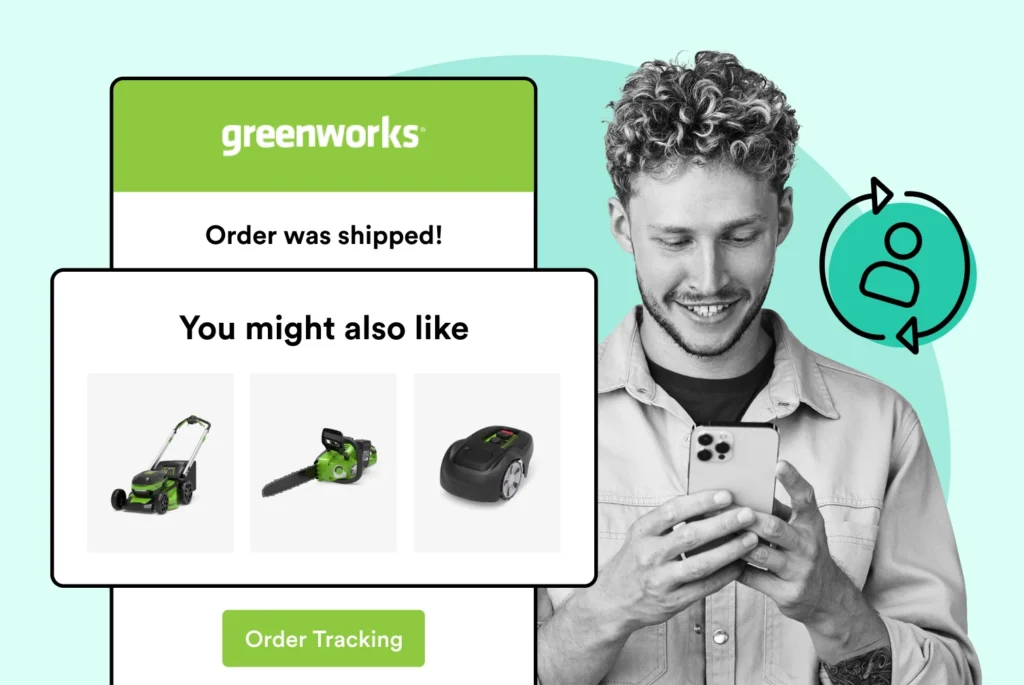
Maximizing Ecommerce Customer Lifetime Value
Practical upselling strategies: encourage repeat business & build stronger customer relationships, directly contributing to enhanced customer lifetime value.
Boost customer experience and reduce support tickets
Realtime order and shipment tracking
Proactive order and shipping notifications
Predictive pre-purchase estimated delivery dates
Self-Serivce branded order tracking
Effortless experience delivered
Make returns profitable and delight customers
Flexibility to define any return destinations & conditions
Simplify returns for your customers and team
Incentivize exchanges over returns
Returns management made easy for your team
Understand why your customers are returning
Unify the online and the in-store experience
Hassle-free pickup experience for customers
In-Store Dashboard to keep operations streamlined
In-Store and Online orders unified
Drive foot-traffic to your stores
Boost customer experience and reduce support tickets
Realtime order and shipment tracking
Proactive order and shipping notifications
Predictive pre-purchase estimated delivery dates
Self-Serivce branded order tracking
Effortless experience delivered
Make returns profitable and delight customers
Flexibility to define any return destinations & conditions
Simplify returns for your customers and team
Incentivize exchanges over returns
Returns management made easy for your team
Understand why your customers are returning
Unify the online and the in-store experience
Hassle-free pickup experience for customers
In-Store Dashboard to keep operations streamlined
In-Store and Online orders unified
Drive foot-traffic to your stores
Find the answer to all your questions
Explore the most comon questions about WeSupply
Calculate the ROI that WeSupply can bring you
Request a no strings attached review of your current shopping experience and missed conversion opportunities
Take a step by step trip through our functionality to see how we can improve your ecommerce processes.
Read actionable articles on how to optimize your post-purchase experience and decrease support tickets
Get inspired by stories of how our customers implemented an effortless post-purchase experience
A Deep Dive into Top Companies' Order Tracking & Returns Strategy
Wondering if WeSupply is a good fit for you? Read through our use cases to see how we can help you increase conversion & improve CX!

Understanding the direct impact of “customer lifetime value with returns” is crucial for ecommerce businesses focused on growth. Returns, if managed properly, are not just a necessary evil but can strengthen customer lifetime value with returns by improving customer satisfaction and loyalty. This article will guide you through strategic approaches to optimize returns, enhancing customer lifetime value with returns, and consequently boosting your business’s long-term success.
Effective management of returns can positively influence customer lifetime value (CLV) by fostering trust, encouraging repeat business, and providing strategic insights for customer retention and satisfaction.
Technological advancements and customization of the return process, including leveraging data and automation, can streamline returns, improve efficiency, and increase customer satisfaction.
Continuous evaluation and adjustment of return strategies through feedback loops, targeted customer retention post-return, and a focus on building long-term relationships are essential for maximizing CLV and driving sustainable growth.
WeSupply empowers businesses to enhance Customer Lifetime Value through strategic returns management. With analytics, store credit incentives, personalization, and innovative automation, WeSupply optimizes return processes, boosts ROI, and fosters lasting customer loyalty. Enhance your returns experience with WeSupply. Get Started today and elevate customer satisfaction!
Customer Lifetime Value (CLV) is a critical concept for any ecommerce business. It represents the projected total revenue a customer will generate for a brand throughout their entire relationship with the business. But why exactly is CLV so important?
In simple terms, comprehension and optimization of CLV enable businesses to:
Make informed decisions that enhance customer value over time
Take into account customer acquisition costs
Bring in new customers
Retain existing customers
Maximize customer value over time
Returns, of course, play a key role in shaping CLV. They can reduce the actual profit from a first purchase due to associated costs and affect the overall customer value. However, if managed effectively, returns can also provide a wealth of insights that help improve our ability to anticipate earnings, allocate marketing resources efficiently, and design recovery strategies accordingly.
CLV’s influence pervades into marketing aspects as well, guiding the allocation of marketing investments to derive maximum value from existing customers. By prioritizing retention over acquisition, ecommerce brands can optimize resource allocation for sustained profitability. The key to achieving this is learning how to calculate customer lifetime value effectively.
As we explore the role of returns in boosting CLV, we must keep the bigger picture in mind. Returns are not simply about managing costs—they’re about maximizing customer lifetime value and driving long-term growth.
Now that the connection between CLV and returns is clear, we can investigate how returns can serve as a strategic tool to boost customer lifetime value. The first thing to understand is that the impact of returns on CLV is not a given—it depends on how effectively we manage the returns process.
A well-handled returns process can have a positive influence on customer perception and loyalty, leading to higher CLV. This is because the return process is one of the key touchpoints between a customer and a brand. It’s an opportunity to demonstrate our commitment to customer satisfaction, and to reassure customers that we value their business.
In fact, data indicates that customers who have engaged in at least one return tend to exhibit a higher CLV. This is likely because a smooth return process fosters trust in prospective customers, leading to sustained business and customer retention.
To genuinely reap the benefits of returns, our efforts must extend beyond merely managing the process effectively. We need to leverage the rich data that returns provide. This data offers valuable insights into customer behaviors and preferences, helping us to:
Customize the return process
Enhance customer satisfaction
Increase customer lifetime value (CLV)
Improve profitability
So, what approach should we adopt to use returns to boost CLV? There are several strategic approaches we can take:
Promote variant exchanges or new product exchanges
Offer incentives for store credit
Focus on customer retention: a 5% increase in customer retention can significantly raise company revenue. This highlights the economic benefit of focusing on retaining existing customers over acquiring new ones.
The key takeaway here is clear: returns are not just a cost to be minimized. When managed effectively, they can be a powerful strategic tool for enhancing customer lifetime value and driving long-term growth.
WeSupply enhances customer lifetime value in eCommerce by analyzing returns and exchanges. It identifies frequently returned products and the reasons behind these returns, helping businesses refine their processes and policies. This strategy improves profit margins and gathers essential product feedback. WeSupply also promotes exchanges over returns, offering flexible options like reshipping, exchanging for equal or higher value items, and using store credit. This approach not only saves sales but also boosts average order values, ultimately enhancing customer satisfaction and loyalty.
Recognizing returns as a strategic tool, the subsequent step is to harness the potential of every return. This involves implementing best practices, streamlining processes, and focusing on customer satisfaction.
To enhance the returns experience, we can begin by establishing a clear and comprehensive returns policy. This means transparently communicating the terms and conditions of returns, and ensuring that customers understand their rights and responsibilities. A well-defined policy can help to manage customer expectations and prevent misunderstandings.
Offering flexible return options is another crucial factor in harnessing the potential of returns. This could include providing free returns, allowing for exchanges, or offering store credit as an alternative to a refund. By giving customers choices, we can cater to their individual preferences and demonstrate our commitment to their satisfaction.
Technology also plays a pivotal part in streamlining the returns process. Leveraging tools like WeSupply can enhance efficiency and customer satisfaction, while automation can speed up various stages of the process, resulting in time savings and reduced errors.
However, it’s also important to be aware of the financial implications of returns. Challenges such as inadequate handling of returns, unclear return policies, and human errors can contribute to elevated return rates, which can in turn diminish customer lifetime value.
To harness the full potential of every return, we need to achieve a balance. We need to provide a positive return experience that satisfies customers, while also managing the costs associated with returns. This delicate balancing act is at the heart of effective returns management.
WeSupply maximizes the potential of every return, enhancing customer loyalty and sales. Key features include:
A self-service returns process, preferred by 70% of shoppers for its frictionless experience.
Flexible return rules catering to various scenarios.
QR code return labels, removing the need for printing and simplifying the return process.
Real-time returns tracking to reduce post-purchase anxiety.
Post-purchase email and SMS notifications for return shipping updates and personalized deals.
“Buy Online, Return In Store” option, adding convenience and encouraging in-store interactions.
These features collectively work to transform returns into opportunities for boosting customer loyalty and increasing sales. Ready to transform your returns experience? Book a demo with WeSupply today and see the difference firsthand!
As evident, customer satisfaction holds a significant role in the returns process. But what exactly is the relationship between customer satisfaction and return rates in the ecommerce industry? And how does a positive return experience impact customer satisfaction?
Studies have shown that offering free returns can lead to a substantial increase in customer spending, by as much as 350%. This suggests that a positive return policy can not only enhance customer satisfaction but also encourage repeat business.
A positive return experience can have a profound influence on customer satisfaction. It can:
Enhance customer loyalty
Encourage customers to revisit the retailer
Play a crucial role in building loyalty
Improve customer lifetime value.
Hence, a satisfying return experience is not solely about resolving a single issue; it’s about fostering a long-term relationship with the customer. It’s about demonstrating to the customer that we value their business, that we’re committed to meeting their needs, and that we’re willing to go the extra mile to ensure their satisfaction.
By focusing on customer satisfaction in the returns process, we can turn a potentially negative experience into a positive one. We can transform returns from a cost of doing business into an opportunity for building customer loyalty and enhancing customer lifetime value.
WeSupply underscores the critical role of customer satisfaction in the returns process, emphasizing a data-driven approach as the foundation for business success. Understanding that the key to enhancing post-purchase customer experience lies in measurable efforts, WeSupply offers tools for tracking CSAT and NPS. This allows businesses to constantly fine-tune their services, adapting to the evolving wants and needs of their customers. The result is an effortless and delightful experience for loyal customers, achieved through ongoing adaptation and improvement informed by reliable analytics.
Encouraging exchanges over refunds is one strategy that can help to harness the potential of returns. But what exactly does this mean, and how can it benefit our businesses?
A variant exchange is the process that allows customers to exchange a purchased item for a different variant of the same product. This can be an appealing option for customers who are generally satisfied with their purchase but would prefer a different size, color, or model.
Variant exchanges have the potential to significantly impact customer lifetime value (CLV) as they can either positively enhance or negatively diminish customer satisfaction. A successful exchange can result in an enhanced customer experience, fostering loyalty and increasing the probability of repeat purchases.
To motivate customers to choose exchanges over refunds, we can offer various exchange options, such as:
Allowing exchanges for any product
Reshipping the same item
Exchanging for an item of the same or higher value
Offering instant store credit for further purchases.
However, it’s important to manage the costs associated with variant exchanges. These include shipping and handling expenses, which can impact profitability. By managing these costs diligently, we can sustain a positive influence on customer lifetime value.
In short, by encouraging exchanges over refunds, we can maintain revenue, improve customer satisfaction, and increase the likelihood of future purchases.
WeSupply focuses on converting returns into exchanges, encouraging customers to choose alternatives over refunds. This approach includes options to exchange returned items for any product, reship the same item, or exchange for an item of the same or higher value. By offering these flexible exchange options, WeSupply helps businesses retain sales and maintain customer engagement, turning the returns process into an opportunity for continued customer satisfaction and loyalty.
Incentivize exchanges over returns
Book a quick call with our experts to see how WeSupply can help you save sales through exchanges and boost the average order value using instant store credit.
Leveraging store credit is another effective strategy for harnessing the potential of returns. Store credit is a payment method that allows customers to purchase goods or services from the same store where the credit was obtained. By offering store credit instead of refunds, we can enhance customer loyalty, stimulate additional purchases, and enable the tracking of customer buying patterns for future analysis. There are several best practices for implementing store credit in an ecommerce environment. These include prioritizing quick and efficient returns processing, ensuring easy access to product information, securely packing and shipping items, and leveraging store credit to enhance store revenue and foster brand loyalty.
Store credit can also contribute to fostering longer customer relationships. By facilitating quick and efficient returns processing, we can enhance customer loyalty. Moreover, by offering exchanges and allowing store credit or gift cards to be used as partial payment, customers are often redirected back to the website where they may spend more than the original order value.
In short, by leveraging store credit, we can retain revenue, encourage repeat purchases, and enhance customer loyalty—all of which can contribute to enhancing customer lifetime value.
WeSupply effectively uses store credit to retain revenue and encourage customer loyalty. It incentivizes exchanges over returns, offering instant store credit to boost sales and order values. Customers are rewarded for selecting store credit instead of refunds, leading them back to the product catalog for future purchases. This strategy, which includes automated issuance of store credit, gift cards, or coupon codes, not only increases profits but also builds a trusting relationship with customers, fostering repeat business.
As evident, returns can offer a treasure trove of data that can enhance our understanding of customers and improve our business practices. But how can we effectively analyze this data, and what kind of insights can it provide?
Analyzing returns data provides businesses with the ability to uncover common reasons for returns, gain insights into customer preferences, and identify patterns that may signal areas for improvement. This understanding enables us to refine our product offerings, enhance customer satisfaction, and optimize the overall return process.
There are several critical metrics to monitor when analyzing returns data. These include:
Churn rate
Key performance indicators (KPIs)
Customer retention rate
Time between purchases
Repeat purchase rate
Average order value
These metrics offer valuable insights into customer behavior and the overall performance of eCommerce operations.
Based on this data, we can make a variety of strategic decisions. These might include:
Refining product development
Enhancing customer service initiatives
Optimizing inventory management
Implementing cost-saving measures
In short, by analyzing and acting on returns data over time, we can enhance customer lifetime value, optimize our processes, and make data-driven decisions that drive long-term success.
WeSupply enables eCommerce businesses to effectively analyze and manage returns data, leading to improved product offerings and profitability. By identifying frequently returned products and understanding customer reasons for returns, including pinpointing serial returners, it helps reduce return rates and optimize business operations. This strategic approach not only streamlines processes but also increases customer satisfaction and lifetime value, ultimately enhancing profit margins and recovering lost revenue.
Utilizing customer data to personalize the return experience is another way to harness the potential of returns. Personalization can result in:
Heightened customer satisfaction
Enhanced customer loyalty
Increased likelihood of repeat purchases
Improved key performance indicators such as conversions, average order value, and revenue growth.
A personalized return experience can significantly impact customer satisfaction. It:
Creates a positive customer experience
Influences buying behavior
Demonstrates the business’s understanding of the customer’s needs and preferences
Fosters stronger relationships and customer loyalty.
To personalize the return experience, we can leverage various types of customer data, including browsing behavior, purchase history, and feedback forms. This data provides valuable insights into customer preferences and behavior, helping us to customize the return process to meet their individual needs.
There are several effective methods for collecting this data. These include:
Analyzing customer returns behavior using the RFM (recency, frequency, monetary) model
Gathering transactional data
Utilizing feedback forms, surveys, and interviews
Monitoring social media
Implementing marketing strategies
In short, by utilizing customer data to personalize the return experience, we can enhance customer satisfaction, increase the likelihood of future purchases, and ultimately boost customer lifetime value.
WeSupply is committed to personalizing the return experience through data-driven decisions. With tools to track CSAT and NPS, businesses can fine-tune their post-purchase experience to meet customer needs. By identifying issues and optimizing processes, WeSupply ensures a seamless and delightful experience, fostering customer satisfaction and loyalty.
Alongside personalizing the return experience, we can segment our customers for more targeted marketing and efficient returns management. Customer segmentation involves categorizing customers based on their interests, needs, characteristics, preferences, and pain points. This approach improves targeted marketing efforts by ensuring that the right customers are engaged with relevant advertisements, leading to increased conversions and sales.
Segmentation can also help us to manage returns more effectively. By understanding the different return behaviors and preferences of our customer segments, we can:
Tailor our return policies and processes to meet their individual needs
Increase customer satisfaction
Lower return rates
Increase overall customer lifetime value.
To segment customers based on their return behavior, we can use a variety of data, including returns data and behavior data. By analyzing this data, we can identify patterns and trends that provide insights into the specific return behaviors of different customer segments,.
In addition, we can use segmentation to customize our marketing and returns management strategies. For instance, we can organize targeted email marketing campaigns that are tailored to specific customer segments. This can lead to more relevant marketing communications, higher engagement rates, and ultimately, higher customer lifetime value.
Ultimately, by segmenting customers for targeted marketing and returns management, we can enhance customer satisfaction, optimize our return processes, and drive long-term growth.
In the current digital age, technology holds a central role in streamlining the returns process. From returns management software to AI-based analytics and automation tools, innovative technologies can enhance efficiency, reduce costs, and boost customer satisfaction,.
For instance, automation can streamline various stages of the return process, such as creating return labels, tracking returns, and handling refunds. This can result in significant time savings and reduced errors, leading to a more efficient and satisfying return experience for customers.
Barcode scanning technology is another key innovation in return management. It offers the following benefits:
Facilitates efficient tracking and management of inventory
Supports accurate tracking throughout the supply chain
Enables quicker identification and processing of items for return
These technologies are not just about improving efficiency—they also provide valuable data that can be used to further optimize the return process. By gathering and analyzing this data, we can identify areas for improvement, make informed decisions, and continuously enhance our return processes.
In short, by leveraging innovative return management technologies and automation, we can streamline our processes, enhance customer satisfaction, and ultimately drive long-term growth.
WeSupply pioneers innovative return management technologies and automation solutions, streamlining the returns process for businesses. These cutting-edge tools enhance efficiency and reduce manual work, ensuring a seamless and efficient return experience. With WeSupply’s commitment to automation, businesses can optimize operations and deliver a superior customer experience while saving time and resources.
Upon the implementation of these strategies, it’s vital to:
Assess and track their impact on customer lifetime value
Track key metrics
Gather customer feedback
Continuously refine our approaches based on the insights we gain.
Several metrics can be used to evaluate the impact of our return management strategies on CLV. These include:
Repeat purchase rate
Customer retention rate
Average order value (AOV)
Customer acquisition cost (CAC)
ROI
By tracking these metrics over time, we can gain valuable insights into the effectiveness of our return management strategies. For example, an increase in the repeat purchase rate or customer retention rate may indicate that our strategies are enhancing customer satisfaction and loyalty, leading to higher CLV.
Customer feedback can also provide valuable insights. By asking customers about their return experiences, we can identify areas for improvement and make necessary adjustments to enhance the return process.
Finally, it’s important to consider the impact of return rates on CLV. Exchanges tend to have a higher repurchase rate compared to refunds, and returns for store credit also play a role in contributing to customer lifetime value.
By continuously measuring and monitoring the impact of our return management strategies, we can ensure that we’re on the right track to enhancing customer lifetime value and driving long-term success.
WeSupply as a post-purchase software helps boost ROI. With innovative return management and data-driven insights, WeSupply helps businesses optimize processes, enhance customer satisfaction, and increase profitability. Use our ROI Calculator to estimate the financial impact and potential gains from implementing WeSupply’s returns management solutions.
The task doesn’t end once a return is processed. To fully leverage the potential of returns, strategies for retaining customers post-return must be implemented. This involves personalized communication, loyalty programs, and targeted promotions.
Personalized communication can be a powerful tool for enhancing customer retention after a return. By following up with customers and addressing their concerns, we can foster trust and demonstrate our commitment to their satisfaction.
Loyalty programs can also play a crucial role in customer retention. By offering rewards and incentives, we can encourage customers to continue doing business with us, even after a return.
Finally, targeted promotions can help to retain customers who have made returns. By offering tailored promotions and discounts, we can foster positive sentiment and encourage repeat purchases.
In short, by implementing strategies to retain customers post-return, we can enhance customer satisfaction, increase the likelihood of future purchases, and ultimately boost customer lifetime value.
As this article has demonstrated, efficient returns management extends beyond processing individual returns—it’s about forging long-term relationships with customers. By focusing on customer satisfaction, personalizing the return experience, and leveraging data and technology, we can foster loyalty and maximize customer lifetime value.
Communication plays a crucial role in establishing relationships with customers following a return. By following up with customers, addressing their concerns, and providing updates on the status of their return, we can foster trust and demonstrate our commitment to their satisfaction.
The return process itself can also enhance customer lifetime value by:
Providing a smooth, hassle-free return experience
Enhancing customer loyalty
Encouraging repeat purchases
Ultimately increasing the overall value that each customer brings to our business.
Effective follow-up communications are also crucial for building relationships with customers post-return. Here are some tips for effective customer follow-up:
Wait a few days after the initial email
Utilize auto-reply messages or scheduled follow-up texts
Apply effective customer follow-up tips and email templates
By following these steps, we can maintain the relationship with the customer and encourage future purchases.
In short, by taking a long-term view and focusing on building relationships beyond the return, we can transform returns from a cost of doing business into an opportunity for enhancing customer lifetime value.
As this article has shown, returns are not merely a business expense—they represent an opportunity for growth. By implementing effective returns management strategies, prioritizing customer satisfaction, and leveraging data, we can enhance customer lifetime value and drive long-term success.
Customer satisfaction during the return process is crucial for business growth. It plays a key role in fostering customer retention, driving referrals, and boosting the likelihood of repeat purchases.
By embracing returns as an opportunity for growth, we can establish a positive cycle that not only enhances customer loyalty and preserves revenue, but also leads to a more informed, sustainable, and prosperous business model in the long term.
In conclusion, returns are an integral part of ecommerce that can offer valuable insights into customer behavior, provide opportunities for enhancing customer satisfaction, and contribute significantly to the optimization of Customer Lifetime Value (CLV). As we have explored, the management of returns is not merely a logistical necessity but a strategic opportunity to build customer loyalty, improve profit margins, and drive long-term growth.
WeSupply is the ultimate solution for businesses looking to maximize Customer Lifetime Value by strategically managing returns. With a focus on analytics and data-driven decisions, WeSupply empowers businesses to track and measure their efforts, ensuring a seamless and delightful post-purchase customer experience. Features such as incentivizing exchanges over returns, utilizing store credit, personalizing the return experience with customer data, and leveraging innovative return management technologies and automation, all contribute to enhancing customer loyalty, boosting ROI, and optimizing return processes. WeSupply turns returns into opportunities, ultimately leading to increased profitability and long-lasting customer relationships.
Fully branded post-purchase experience
Instead of sending customer’s generic shipping emails and carrier tracking pages, book a quick call with our experts to see how WeSupply can help you take control of your customer’s experience after they buy from you.
The customer lifetime value formula is calculated by multiplying the average purchase value by the average number of purchases to get the customer value, and then multiplying that by the average customer lifespan to determine the customer lifetime value.
To calculate customer lifetime value with retention, you can use the traditional CLV formula: Gross Margin per customer lifespan multiplied by retention rate, divided by (1 + Rate of discount – Retention rate). This will give you the CLV, allowing you to make informed business decisions.
WeSupply is a comprehensive solution that helps businesses enhance CLV by strategically managing returns. It offers a range of features to optimize the returns process and turn it into an opportunity for increasing customer loyalty and profitability.
WeSupply emphasizes a data-driven approach, allowing businesses to track and measure their efforts, helping them understand and adapt to customer needs to improve the post-purchase experience.
WeSupply incentivizes customers to select instant store credit over refunds. This keeps customers engaged by redirecting them to the product catalog for future purchases, fostering repeat business and trust.
WeSupply stands out with its comprehensive set of features, including analytics, store credit incentives, personalization, and innovative automation. These features collectively contribute to fostering customer loyalty, boosting ROI, and optimizing return processes for long-term success.

Learn How To Create Successful Post Purchase Email Campaigns
Build an effective post-purchase email flow that helps you increase customer satisfaction and drive revenue growth!
Consumers seek the best deals on:

Practical upselling strategies: encourage repeat business & build stronger customer relationships, directly contributing to enhanced customer lifetime value.

How to leverage returns data, enhance the returns experience, and ultimately, increase customer lifetime value e-commerce returns.

If you’re a Shopify retailer seeking strategies to enhance customer retention & maximize repeat sales, then you’re in the right place.
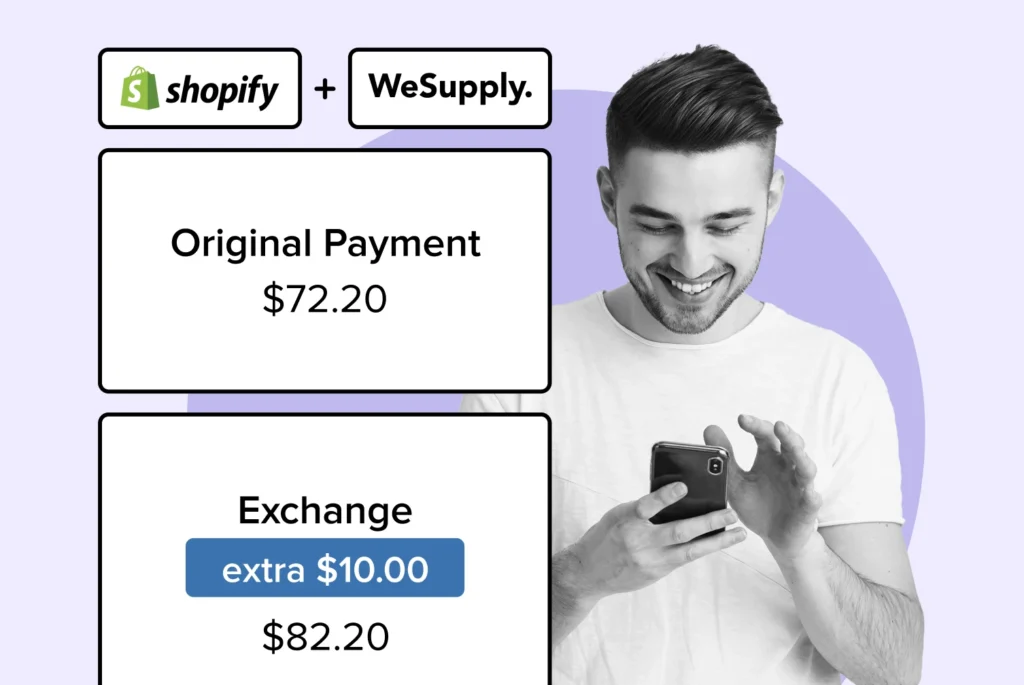
Explore the strategic use of discounts to improve Shopify CLV, the balance between enticing offers and brand value.
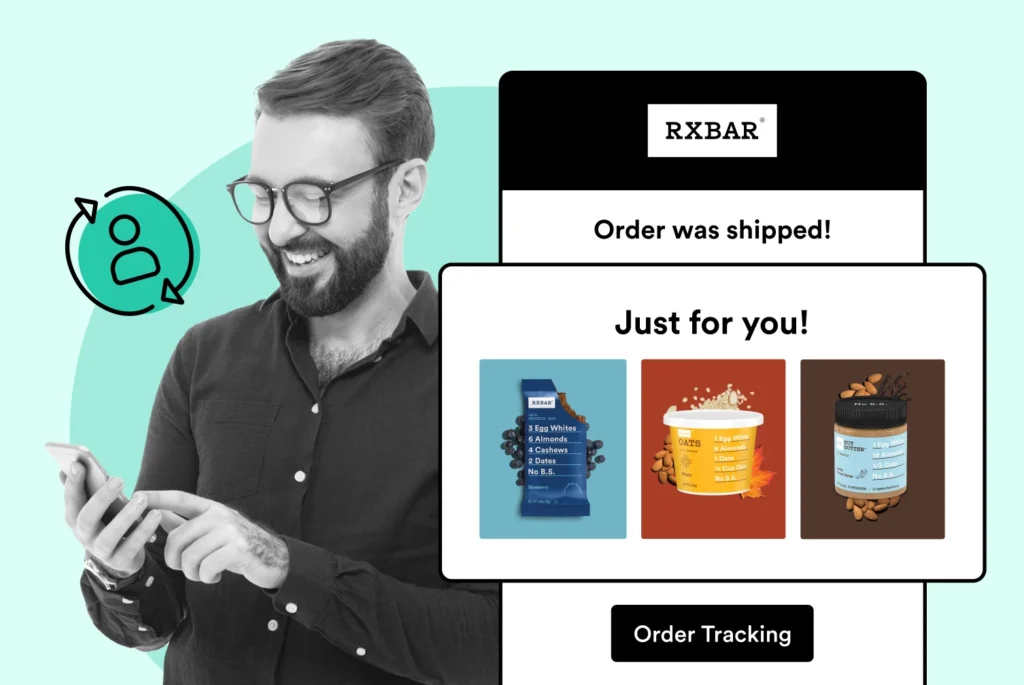
Practical upselling strategies: encourage repeat business & build stronger customer relationships, directly contributing to enhanced customer lifetime value.

Let’s explore practical strategies to increase your CLV: how to calculate, analyze, and amplify this pivotal metric.

Customer lifetime value (CLTV): Let’s navigate through its calculation & its profound implications for your marketing strategy & bottom line.
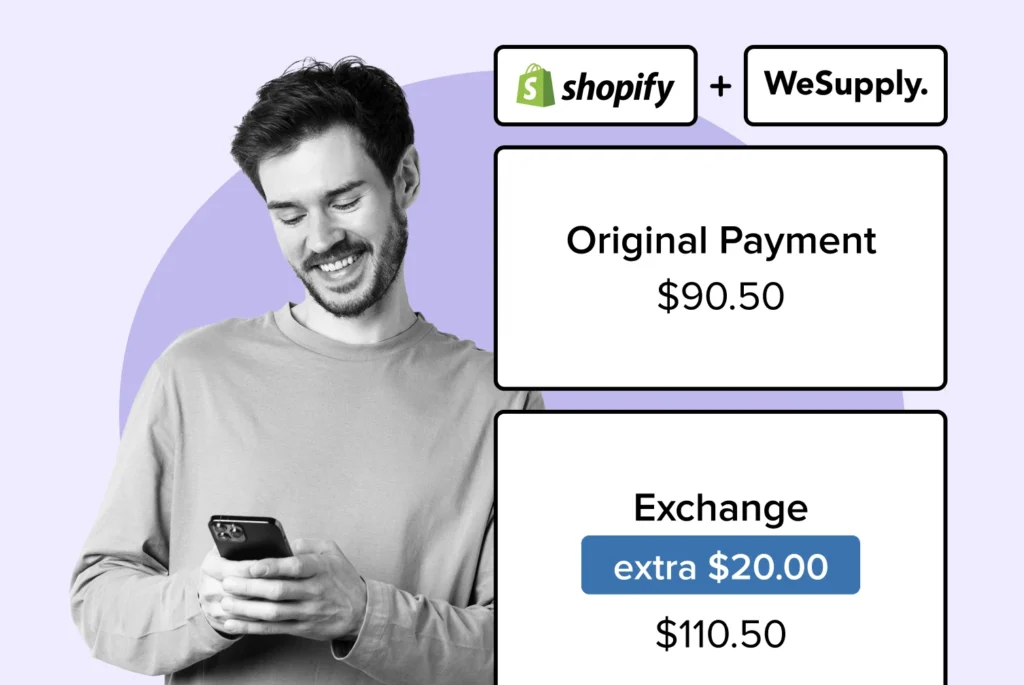
This article dives into the how-to of managing exchanges within your Shopify store, offering practical tactics and key insights.
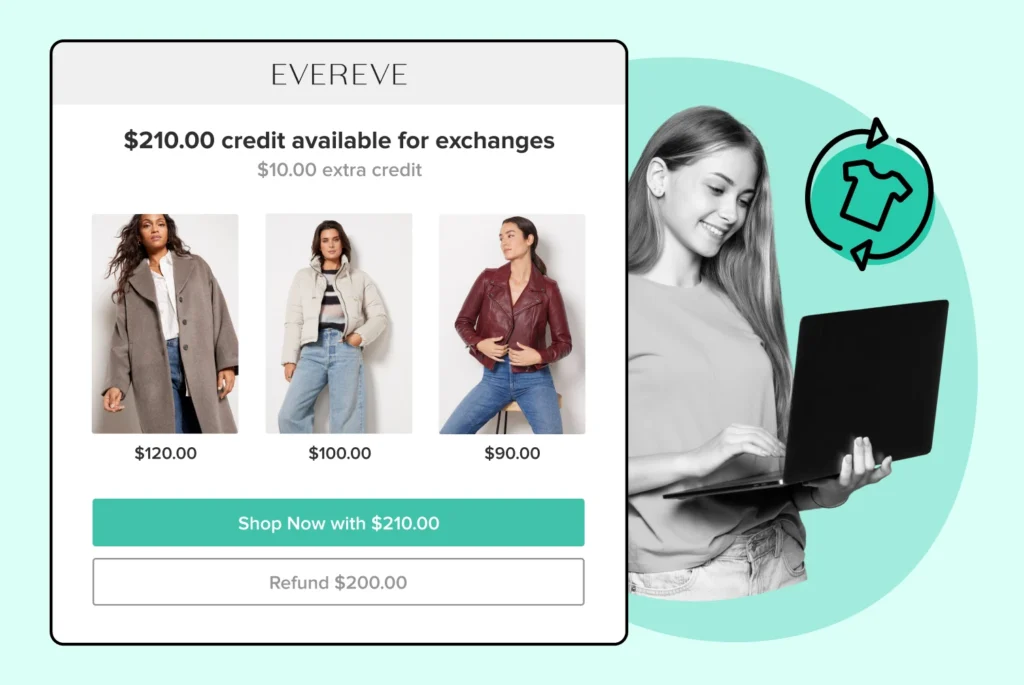
Learn how upgraded exchange processes can reduce costs, conserve resources, and transform customer returns into new purchasing opportunities.